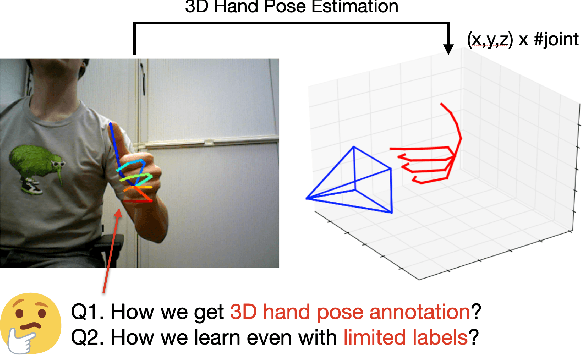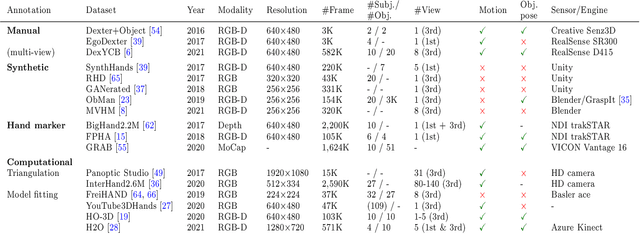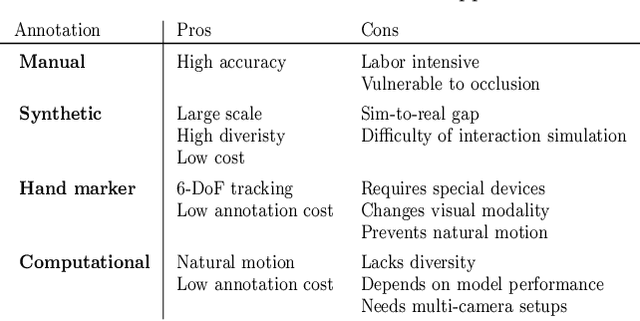Efficient Annotation and Learning for 3D Hand Pose Estimation: A Survey
Paper and Code
Jun 07, 2022



In this survey, we present comprehensive analysis of 3D hand pose estimation from the perspective of efficient annotation and learning. In particular, we study recent approaches for 3D hand pose annotation and learning methods with limited annotated data. In 3D hand pose estimation, collecting 3D hand pose annotation is a key step in developing hand pose estimators and their applications, such as video understanding, AR/VR, and robotics. However, acquiring annotated 3D hand poses is cumbersome, e.g., due to the difficulty of accessing 3D information and occlusion. Motivated by elucidating how recent works address the annotation issue, we investigated annotation methods classified as manual, synthetic-model-based, hand-sensor-based, and computational approaches. Since these annotation methods are not always available on a large scale, we examined methods of learning 3D hand poses when we do not have enough annotated data, namely self-supervised pre-training, semi-supervised learning, and domain adaptation. Based on the analysis of these efficient annotation and learning, we further discuss limitations and possible future directions of this field.
 Add to Chrome
Add to Chrome Add to Firefox
Add to Firefox Add to Edge
Add to Edge